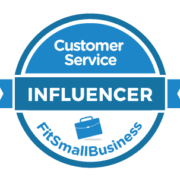12 Days of Xmas #6: My head of customer experience said to me “If Santa can map his journey to deliver on time then why can’t we?”
On the 6th day of Christmas my head of customer experience said to me, “If Santa can map his journey to deliver on time then why can’t we?”
Well ok, that may be too difficult a task for us mere mortals to figure out how Santa does it, but have you ever tried to map out the journey your customers and intermediary partners go through every day of the year to get the full benefit of your proposition?
No, well neither have many B2B organisations and in our experience, B2B businesses need to take a more pro-active approach to delivering a defined customer experience rather than allowing the experience to simply develop. This Customer Journey map, if developed accurately, provides a key contribution to delivering your customer proposition in a way that improves relationship trust, customer satisfaction, and ultimately business performance.
Understanding and “managing” customer journeys sits at the heart of Customer Experience theory, and numerous approaches have been taken to map out the current and desired experience. This is not straightforward in many B2B businesses because of the inherent tripartite relationship that often exist between producer, intermediary and customer and the fact that the intermediary and end-customer journeys are very different.
The end-customer journey will involve experiences with both the intermediary and provider – with the actual interactions triggered by all three parties. These interactions can be in person, virtual or online – all need to be considered. The intermediary journey is based on multi-layered long-term B2B relationships where trust, service, mutual value, and speed/ease of multiple interactions are paramount.
A very useful resource to support your sales and account management teams and wider stakeholders is a customer playbook. A good playbook will provider stakeholders with a clear view of the main objectives and key messages in play at each stage of the customer journey. They help provide clarity of responsibilities for teams and help align goals across departments – especially useful where there are multiple teams involved in delivering parts of the customer journey.
If you haven’t got a customer journey map for your business or an accompanying customer playbook, why not sit down in 2024 and make a start with developing a high level framework that summarises the journey into one illustration that can be easily explained to all concerned. Then, ensure each step in the framework is mapped in detail, with different treatments or variations to the journey clearly identified by segment or channel. Pinpoint those critical interactions as Moments of Truth (MOTs) on the journey maps. MOTs often represent a handful of critical moments where the customer experience and satisfaction is missed or exceeded.
And if you get stuck . . . just think how hard this must be for Santa OR alternatively give the team at Customer Attuned a call as we have vast experience undertaking customer journey mapping.
Contact us at: hello@CustomerAttuned.com
//
- Great insights shared by cross sector business leaders - February 27, 2024
- Strategic Account Management Training – the importance of reflection - February 1, 2024
- Building a High Performing Account Management Team - November 28, 2023

